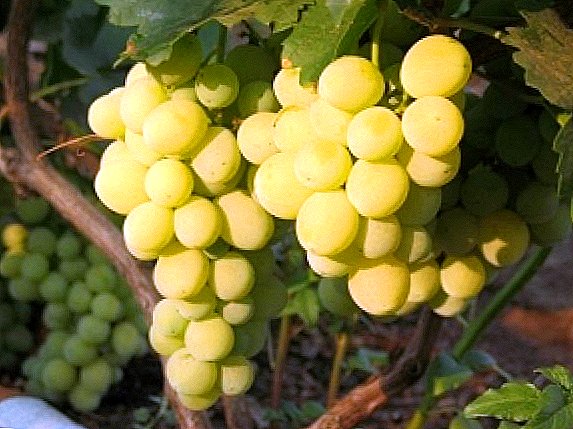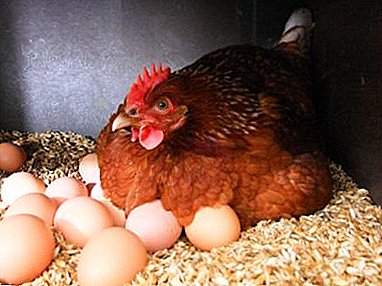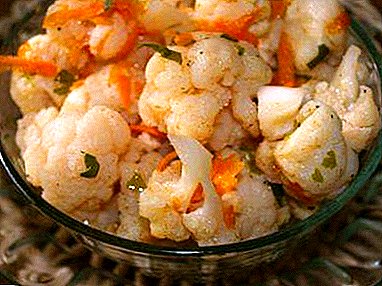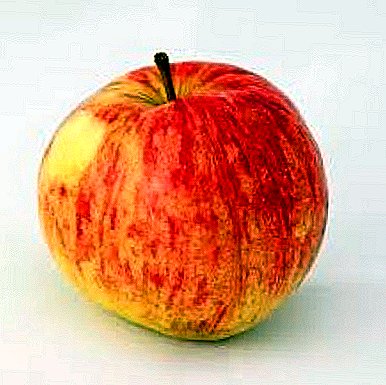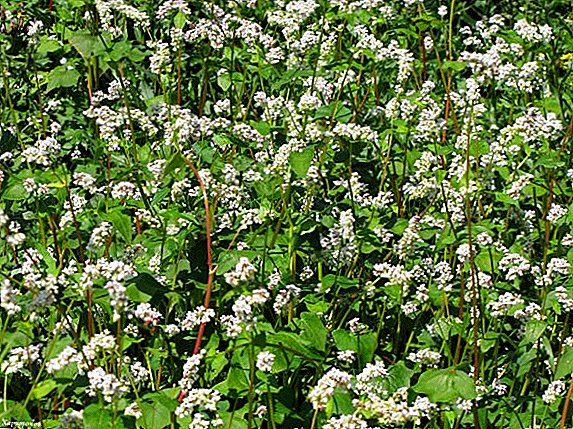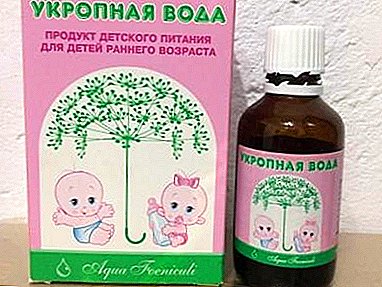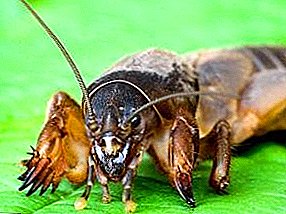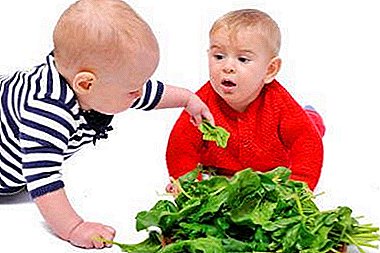
Spinach - a real treasure trove of vitamins and trace elements. Its benefits for the growing body of a child are difficult to overestimate.
It belongs not to greenery, as is commonly believed, but to vegetables and is very popular in European and American cuisine.
In Russia, few know about the beneficial properties of this plant and about the possibility of including it in the children's diet. The article will tell you what is the use of spinach, and from what age it can be introduced into complementary foods.
From what age can I give?
The unique composition of this vegetable makes it particularly beneficial for the health and development of the child. It has a beneficial effect on the formation of the central nervous system of the child, its cardiovascular system, and the work of the gastrointestinal tract. This leaf vegetable also helps children suffering from constipation, because it contains a lot of fiber.
Most Russian pediatricians agree that children need to introduce spinach, starting with six months only after the child has tried other leafy vegetables. But foreign manufacturers of baby food include spinach in dishes with potatoes, designed for children from 4 months.
It is necessary to begin introduction only with thermally processed vegetable, that is in the form of mashed potatoes or soup. For the first time, a minimum dose is sufficient (1ch.l.). Although spinach does not belong to allergic products, individual intolerance is not excluded. In the absence of reaction, the daily dose can be gradually increased to 50g.
Fresh spinach leaves are introduced into the menu of a child over two years old. Greens are recommended to add to salads in the proportion of 50g of leaves per 200g of lettuce.
Important! Spinach dishes are not recommended to give the child more than twice a week.
You can offer your baby only a freshly prepared dish.
Benefit
 The usefulness of spinach is related to its composition. Content of nutrients (on 100 g of a product):
The usefulness of spinach is related to its composition. Content of nutrients (on 100 g of a product):
- Vitamins (mg):
- A - 0.75;
- B1 - 0.1;
- B2 - 0.25;
- C - 55;
- E - 2.5;
- B3 - 1.2;
- B4 - 18;
- B5 - 0.3;
- B6 - 0.1;
- B9 - 80;
- K - 483;
- H - 0.1.
- Minerals (mg):
- Potassium - 774.
- Calcium - 106.
- Magnesium - 82.
- Phosphorus - 83.
- Sodium - 24.
- Iron - 3.5.
- Zinc - 0.53.
- Selenium - 0.001.
- Copper - 0.013.
- Manganese - 9.
- Iodine - 0.02.
- Nutritional value (per 100 g of product):
- Calories - 23 kcal.
- Proteins - 2.9 g.
- Fat - 0.3 g.
- Carbohydrates - 2 g.
- Dietary fiber - 1.3 g.
- Water - 91.6 g.
 In this way, spinach in baby food contributes to:
In this way, spinach in baby food contributes to:
- normalization of metabolism;
- the prevention of rickets and the formation of strong bones and teeth;
- immunity strengthening;
- treatment of anemia;
- relieving constipation.
Also in the composition of spinach contains lutein, enhances immunity, dietary fiber. It is believed that the antioxidants contained in the vegetable prevent the occurrence of oncology. The advantages of spinach include its low calorie content, so overweight does not threaten the child.
In addition, you need to add to this list a toning effect, a mild diuretic effect, help with stress and mental exertion, maintaining the thyroid gland.
Can it harm and when?
The main disadvantage of spinach is the presence of oxalic acid. Because of this, it cannot be offered to babies with kidney or urinary system diseases. Also, this leaf vegetable can harm the health of children with liver diseases, ulcers of the gastrointestinal tract. However, an excess of oxalic acid is observed only in the old leaves of spinach, and in young it is very small.
Important! Oxalic acid can be neutralized by adding milk or cream to a dish. These are the essential ingredients of all baby spinach dishes.
What is combined and how to use?
- Fresh Spinach It goes well with the first and second courses. But in the fresh form, the children do not like him because of obscenity. Before use, you need to sort out the leaves, removing the old ones. Fresh spinach can only be stored in the refrigerator for no more than 2 days, previously wrapped in parchment or in a damp napkin. Otherwise, it forms salts that are harmful to the body, not only the child, but also adults.
At an early age, fresh spinach is better not to give children. You can add it to the menu for children from two years old, not more than twice a week and only young leaves are not more than 5 cm in length.
- Dried spinach used as a seasoning for fish, meat dishes, cereals and side dishes. Fresh leaves are carefully selected, washed and dried in fresh air or in a special dryer.
Dried herbs are stored in an airtight container in a dark place and, if necessary, ground, added to the dish a few minutes before the end of cooking. Dried spinach is recommended to offer children from 1 year in the main courses.
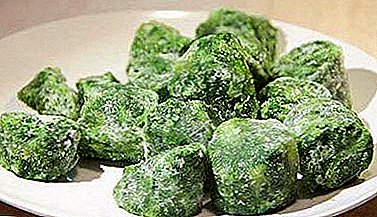 Frozen Spinach is good in that it retains its nutrients and taste when frozen. Frozen greens can be added to dishes for kids. But it is not allowed to store spinach in the freezer for longer than 3 months. When cooking it is necessary to take into account that frozen spinach should be taken 2 times less than fresh.
Frozen Spinach is good in that it retains its nutrients and taste when frozen. Frozen greens can be added to dishes for kids. But it is not allowed to store spinach in the freezer for longer than 3 months. When cooking it is necessary to take into account that frozen spinach should be taken 2 times less than fresh.When you take it out of the freezer, you should immediately lower it into a hot dish, because during pre-thawing, spinach loses more vitamins.
- Boiled spinach as well as frozen, does not lose its nutrients. The first water must be drained and continue to boil in new water. This will get rid of nitrates in the leaves. Fresh leaves with uniform coloring are suitable for cooking for children. Spinach is boiled quickly, so the tab in the dish occurs at the end of cooking.For babies up to one year, mashed potatoes and souffles with spinach and meat or vegetables are prepared, they are added to mashed soups. Older children willingly eat omelets with greens, pies, salads and just spinach leaves with various fillings, for example, egg pate or cheese.
Step-by-step recipes for children's meals
Smoothies
 Ingredients:
Ingredients:
- young spinach - 1 bunch;
- banana - 1 pc .;
- milk - 1.5 st .;
- honey - 1 tsp;
- lemon juice - 2 tbsp.
Cooking:
- Rinse the spinach well, separate from the old leaves and place in a blender.
- Add sliced banana to honey, honey and lemon juice.
- Grind everything with a blender, then pour the milk and beat the contents of the blender again.
Serve smoothies immediately, because during storage, spinach loses its color and beneficial properties.
We offer to watch a video about that. How to make spinach smoothie for baby:
Chicken Souffle
 Ingredients:
Ingredients:
- spinach - 1 bun or 1 tablespoon frozen;
- 1 pc egg;
- milk - 30 ml;
- boiled chicken meat, chopped in a blender - 0.5 tbsp .;
- a pinch of salt;
- butter for greasing the form.
Cooking:
- Spinach briefly steamed in a container under the lid.
- Finish the yolk, salt and milk to the chicken, beat well.
- Separately, beat the protein until foam and, mixing, add to the mixture.
- Then pour everything into a pre-oiled form.
- Cook the souffle in a double boiler, cover with a lid. Or put the form in a container filled with water and put in the oven for 30 minutes at a temperature of 180 ° C).
This tender souffle will be appreciated by small gourmets who still do not know how to chew food well.
Casserole
 Ingredients:
Ingredients:
- fresh spinach - 500 gr;
- sugar - 2 tablespoons;
- egg - 2 pcs .;
- noodles - 100 g;
- juice of one lemon;
- butter for greasing the form;
- a pinch of salt.
Cooking:
- Spinach leaves, rinse, chop and boil for 3-5 minutes. Squeeze out the water and grind in a blender.
- Pour lemon juice.
- Beat eggs with sugar.
- Boil noodles, drain the water.
- All mix, salt.
- Place the resulting mass in a pre-oiled form.
- Bake in the oven for 20 minutes at 180 ° C.
Other leafy vegetables
In addition to spinach, there are many other leafy vegetables that are very useful for children. Beijing and cauliflower, broccoli, leaf lettuce, watercress, leaf beets are very rich in easily digestible iron, calcium and vitamins, especially necessary for the development of the child.
In this way, Spinach is one of the richest in composition of leafy vegetables. Vitamins and minerals it contains in large quantities. But due to the lack of a pronounced taste, children often refuse to eat it. Nevertheless, even a small content of this product in the daily children's menu will significantly improve the health of the child and will have a positive effect on its development.


 Frozen Spinach is good in that it retains its nutrients and taste when frozen. Frozen greens can be added to dishes for kids. But it is not allowed to store spinach in the freezer for longer than 3 months. When cooking it is necessary to take into account that frozen spinach should be taken 2 times less than fresh.
Frozen Spinach is good in that it retains its nutrients and taste when frozen. Frozen greens can be added to dishes for kids. But it is not allowed to store spinach in the freezer for longer than 3 months. When cooking it is necessary to take into account that frozen spinach should be taken 2 times less than fresh.